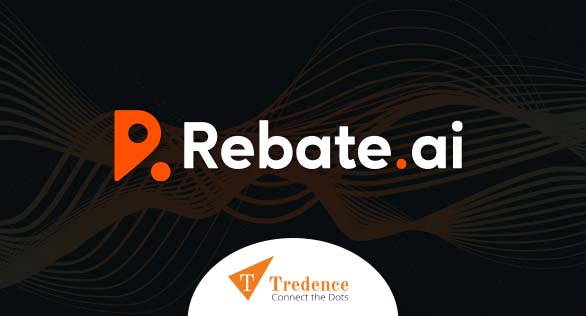
Hadoop data lakes have emerged as the foundation for modern analytics and scalable storage, breaking down traditional barriers and enabling organizations to harness the full potential of their information assets provided by cloud providers. It all began in 1997, when the cost of computation and storage decreased drastically resulting in conversion from paper-based to digital storage. The very next year, the problem of Big Data emerged. As the digitalization of documents far surpassed the estimates, Hadoop, along with its reliance on commodity servers, was the step forward towards low-cost storage.
Today, we are constantly inundated with terms like Data Lake and Data Reservoirs, which relate to data storage. What do these really mean? Why should we care about these buzzwords? How do they improve our daily lives? Let's dive in and find out!
What is a Hadoop data lake and how does it work?
A Hadoop data lake is a centralized repository that stores vast amounts of structured and unstructured data using Hadoop's distributed computing framework. It enables organizations to manage, analyze, and process large datasets efficiently. By leveraging tools like HDFS and MapReduce, users can easily access and derive insights from their data.
Hadoop Data Lake Architecture Explained
A Hadoop Data Lake architecture is a centralized repository built on a collection of Hadoop clusters that store vast amounts of raw data in its native format. Examples of data forms stored include structured and unstructured data such as JSON, log files, images, and IoT event streams, showcasing its importance in open source data management. Key components of this architecture include:
- Storage Layer (HDFS)
At the core of Hadoop Data Lake is the Hadoop Distributed File System (HDFS), which provides a distributed, fault-tolerant storage system. Data is stored in its raw form across multiple nodes, allowing for scalability and high availability. - Data ingestion
Data from various sources - whether structured or unstructured - is ingested into the data lake. This process is done either in batches or real-time modes using sophisticated tools like Flume, Kafka, or Apache Sqoop. - Processing and computational frameworks
Processing frameworks run on top of Hadoop to transform, cleanse, enrich, and analyze data. These frameworks enable both batch and stream processing to convert raw data into refined datasets. - Metadata and cataloging
Hadoop data lakes incorporate metadata services and data catalogs to manage vast and varied data. These help tag data with identifiers that allow for easier search, governance, and management of data assets. - Security and governance
Security is integrated into every layer of Hadoop data lake architecture, including authentication, authorization, encryption, and auditing. Governance frameworks also ensure data quality, compliance, and proper data lifecycle management.
Key Benefits of Using Hadoop for Data Lakes
Using Hadoop for big data environments and data lakes offers the following key benefits:
Scalability and performance: Hadoop allows scaling from gigabytes to petabytes of data using commodity hardware, allowing organisations to efficiently handle growing data volumes. Its distributed architecture also allows for parallel processing of large datasets.
Flexibility in data storage: Hadoop data lakes can store data in any format without preprocessing requirements or schema definitions at ingestion. This scheme-on-read approach provides unmatched flexibility for storing diverse data types such as logs, multimedia, and sensor data.
Fault tolerance and reliability: Hadoop's distributed nodes offer high fault tolerance through automated redirection and failover processing. This ensures data availability and system resilience even if some nodes fail.
Extensibility and future-proofing: Hadoop data lakes allow organizations to store raw data now and apply transformations later, supporting future technological changes and reducing migration costs as businesses evolve.
Common Use Cases in Enterprises
Common enterprise use cases for Hadoop data lakes span multiple industries, leveraging its scalability, flexibility, and cost-effectiveness to handle large and diverse datasets:
Data warehouse offloading: Organizations offload large volumes of less frequently accessed data from expensive relational data warehouses to Hadoop data lakes. This reduces costs while maintaining access to data analytics and reporting.
Centralized data repository: Hadoop data lakes act as unified platforms, consolidating structured and unstructured data from diverse sources such as ERP, IoT devices, CRM, etc. This centralization breaks down data silos and facilitates cross-functional data governance and analytics.
Real-time data processing and reporting: Hadoop data lakes allow real-time ingestion and analysis of streaming data, supporting mission-critical applications such as clinical decision-making, financial transactions, and operational dashboards.
Hadoop Data Lake Implementation Strategy
Implementing an effective Hadoop data lake strategy involves careful planning and leveraging the Hadoop ecosystem to ensure scalability, data quality, and security. Key elements of the strategy include:
Defining a clear data scope
The entire implementation process begins with defining business goals and identifying the types of data to be ingested. These steps guide the architectural design and ensure the data lake aligns with organizational needs.
Data ingestion with quality validation
Implement real-time or batch data ingestion pipelines that include a free trial of data quality validation during ingestion. This step ensures that only clean and relevant data enters the data lake, preventing any downstream errors.
Building a flexible and scalable architecture
The next step is to configure the Hadoop data lake to be flexible and scalable. It should be capable of handling diverse data types and growing volumes. HDFS or compatible storage systems with distributed file systems can be used here.
Establishing robust security and governance framework
This key step enforces robust security protocols such as role-based access control, encryption, and regular security audits. Implementing data governance policies, quality standards, and data lifecycle management also helps ensure compliance with regulations.
Optimizing data storage and formats
By choosing appropriate file formats and optimizing file sizes, users can enhance query performance and reduce storage costs.
Continuous monitoring and auditing
The final step is to set up real-time monitoring for data quality, system performance, security compliance, and overall data lifecycle. Regular audits help maintain the health and efficiency of the data lake environment, balancing costs and performance.
Challenges and Considerations in Hadoop Data Lake
Implementing and managing a Hadoop data lake presents several challenges organizations must address to ensure the data lake delivers full value rather than turning into a costly and unmanageable data swamp. Some of the considerations include:
- Integration difficulties: Data lakes consolidate data from multiple sources, each in different formats or schemas. In such a case, achieving seamless integration across diverse data types can be complex and often requires sophisticated ETL processes.
- Schema mismatch: Sometimes, the flexibility of data lakes to store any data format can increase the risk of schema mismatches. This makes data retrieval and analysis more challenging.
- Slow data loading: Loading and processing large datasets can be time-consuming, potentially leading to failed queries and missed business deadlines. Optimizing loading speeds and performance issues require expertise and continuous fine-tuning.
- High initial and ongoing costs: Setting up a Hadoop data lake demands significant investments in infrastructure, software, and skilled personnel. Ongoing maintenance, optimization, and scaling also add to the total cost of ownership.
Wrapping Up
While the above forms the foundation, what drives data processing and analysis are frameworks such as Pig, Hive and Spark for data processing along with other widely used utilities for cluster, metadata and security management. Now that you know what the beast is made of (at its core), we will cover the dressings in the next parts of this series. Au Revoir!
FAQs
1] How does Hadoop support data lake architecture?
Hadoop supports data lake architectures primarily through HDFS and its ecosystem - enabling data lakes to efficiently store and analyze massive volumes of raw and diverse data types.
2] Is Hadoop a data lake or a data warehouse?
Hadoop itself is a technology platform used to build data lakes. On the other hand, Data warehouses are separate systems focused on processed and structured data. So Hadoop is neither a data lake nor a data warehouse.
3] How does a Hadoop data lake differ from a traditional data warehouse?
A Hadoop data lake stores raw, multistructured data for flexible analytics, whereas a traditional data warehouse stores processed, structured data optimized for specific queries and reporting.
4] Can Hadoop data lakes be deployed in the cloud?
Yes, Hadoop data lakes can be deployed in the cloud, leveraging distributed storage and compute resources for scalability and cost efficiency.
5] Can Hadoop data lakes support real-time data processing?
Yes, Hadoop data lakes support real-time data processing and analytics through integration with multiple streaming and processing frameworks like Spark and Trino.
Topic Tags




